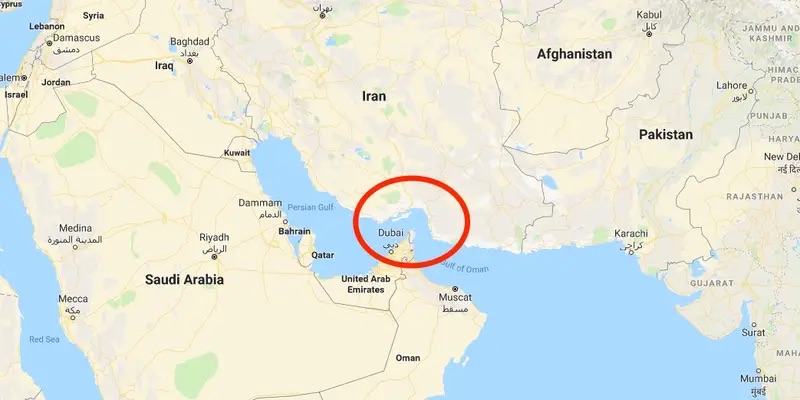Whenever war breaks out, the most important consideration by far should always be for the people who are killed or wounded in the conflict. Economic considerations are, and should always be, secondary. However, it’s still important to understand what is likely to happen if the conflict between Israel and Iran continues, especially if the United States gets involved.
On June 13, despite another round of nuclear talks being scheduled for the upcoming weekend, Israel launched a surprise attack on the Iranian regime, taking out numerous top generals, nuclear scientists, and numerous important facilities with a combination of spies and assets it had smuggled into the country in an aerial campaign. Iran has since retaliated and been able to break through Israel’s Iron Dome on numerous occasions with its ballistic missiles. At the same time, Israel has continued to strike targets inside Iran as both sides make increasingly bellicose claims against each other.
The United States has, thus far, only provided defensive and intelligence support to Israel, but President Trump has clearly stated he is considering strikes on Iran, particularly the Fordow Fuel Enrichment Plant buried deep inside a mountain. He’s also demanded “unconditional surrender,” while Benjamin Netanyahu has hinted at the goal of regime change. However, as of this writing, the United States has not chosen to attack Iranian targets directly.
What Has the Effect Been So Far?
The biggest effect economically thus far has been a marked increase in the price of oil. Since June 13, oil prices have increased 10.4% from $66.90 per barrel to $73.85 per barrel. This is almost certainly based predominantly on fear of the future rather than actual supply shortages. So, a quick resolution to the war would likely bring prices back down.

As of now, it’s unlikely oil deliveries will be substantially affected. But that could change very dramatically if the war becomes a protracted affair, and especially if the United States gets involved. But before analyzing that possibility, we should do a quick review of recent history.
A Brief Recap of Recent American Interventions
If the success of American military interventions in the last 25 years were measured as an investment strategy, it would amount to something like putting all of your savings into FTX circa mid-2022. They go like this:
- Afghanistan, 2001: The U.S. initially fought to kill Osama bin Laden and defeat Al-Qaeda. Bin Laden escaped, and it turned into a nation-building operation. Almost 2,500 Americans died, and trillions were spent in a 20-year war—just to end up replacing the Taliban with the Taliban.
- Iraq, 2003: Sold on the false premise of WMD, almost 5,000 Americans and hundreds of thousands of Iraqis died as the country descended into a protracted, sectarian civil war. ISIS eventually formed out of the chaos.
- Libya, 2011: The United States sided with rebels (including a number of whom were affiliated with or sympathetic to Al-Qaeda) to overthrow Gaddafi’s authoritarian regime. The country has been politically fractured, with multiple groups still fighting for power and open-air slave markets in the streets of Tripoli. In addition, four Americans were killed by insurgents in Benghazi.
- Syria, 2013: The United States backed rebels to overthrow the brutal Assad regime. After a long civil war that cost the lives of hundreds of thousands of Syrians, the Al-Qaeda leader (rebranded as HTS) took over what is now an utterly wrecked country in 2024. Both Libya’s and Syria’s collapse greatly exacerbated the migrant crisis.
- Yemen, 2015: The United States backed Saudi Arabia’s brutal war against the Houthis. Hundreds of thousands of civilians died, and the Houthis ended up consolidating power anyway.
Needless to say, American interventions in the Middle East have been an utter disaster. Just the wars in Iraq and Afghanistan have cost an estimated $6.5 trillion! These foreign interventions have put an enormous strain on America’s fiscal situation and are a major reason many countries are seeking to “de-dollarize,” which could have very substantial consequences for the United States in the future.
Oil prices, in particular, spiked after the Iraq war, going from $33.51 in March 2003 when the war began to a peak of $133.88 in June 2008.

This most certainly wasn’t just caused by the Iraq War. Indeed, the housing bubble that led to the 2008 crash would more accurately be described as the housing/oil bubble, or even the housing/oil/stock bubble, as oil prices had been bid up to unsustainable levels.
Needless to say, whether it be morally, politically, or economically, U.S. interventions have a very poor track record, to say the least.
Why This Time Is Different (It’s Worse)
Iran is not Iraq. It is almost four times the size and four times the population of Iraq when the U.S. invaded in 2003. As the damage done to Israel’s cities so far shows, it is also far more advanced militarily than Iraq ever was. In fact, it has numerous hypersonic missiles that the United States has somehow yet to figure out how to produce.
A 2002 war game run by the U.S. military against what presumably would have been Iran actually had the United States losing. Lieutenant General Paul Van Riper, acting as the Iranians, used asymmetrical tactics the U.S. military’s more conventional approach was unprepared for. Indeed, for that reason, as well as Iran’s mountainous and difficult terrain, a ground invasion is effectively off the table, especially after the debacle in Iraq.
Yes, tactics and technology have changed, but it’s highly unlikely that the fundamental calculus has. This means for a regime change, it would require troops (not realistic), nukes (terrifying), or a popular revolt.
It is very hard to get reliable survey data about the Iranian population’s views of their government. But from the surveys I’ve found and everything I can tell, the Islamic Republic is not popular among the Iranian people and almost universally despised in the Persian diaspora. That being said, if they were going to overthrow the government, we would see some signs of it. Yet there is very little, if any, indication of such a revolt.
We should remember that Saddam Hussein was also unpopular among Iraqis. If the Soviet people did not rebel against Stalin when the Nazis invaded, and the Germans did not rebel against Hitler when the Allies began their saturation bombing campaign, exactly when did this happen?
Maybe there was a sliver of a chance the regime would implode after the first night’s decapitation attack, but Iran has clearly regrouped. Generally, the only time revolts break out is after a long, unpopular war, where the civilian population is under significant and sustained duress.
The most obvious example is Czarist Russia in 1917. But that was after three brutal years of World War I and millions of casualties. (Further, as bad as the Ayatollah is, I don’t think the Bolsheviks would be an improvement, so we shouldn’t assume what comes after would be good.)
Studies show, if anything, that aerial bombing campaigns strengthen support for the existing government. In addition, I cannot find a single example of a war won by air power alone. Even a perceived win, such as Libya in 2011, had rebel forces on the ground.
The closest thing I can think of was Japan in 1945. This shouldn’t even count for two obvious reasons: It involved an invasion of all the outlying islands and a massive naval blockade, and I don’t think I need to mention this part.
Even substantially hampering production with an aerial bombardment alone is incredibly difficult. To illustrate this, Germany increased military production until late 1944 despite the largest saturation bombing campaign in history—one that dwarfs the current Israeli attacks on Iran.
A regime change war simply does not appear realistic. It is highly unlikely that either side can win this war in the way they are currently fighting it. But is taking out Fordow (the Iranian nuclear plant buried 300 feet underneath a mountain) and setting back Iran’s nuclear program a possibility?
Let’s ignore DNI director Tulsi Gabbard’s statement in March that “The IC continues to assess that Iran is not building a nuclear weapon” and IAEA director-general Rafael Grossi’s statement that “we did not have any proof of a systematic effort (by Iran] to move toward a nuclear weapon” and assume Iran is seeking a nuclear weapon. They certainly have enriched uranium well past where it would need to be for a nuclear reactor. Can this site be destroyed and destroy any Iranian nuclear ambitions for years to come?
Other than nuclear weapons, the only weapon that has a chance is the MOP bunker buster bomb. Only the United States has these weapons, but they are far from a sure thing.
For one thing, a single bunker buster can only go—at the absolute most—200 feet down. So you would need at least two that hit the exact same spot. And the facilities would need to be directly below the hit. Also, since the MOP would be hitting a mountain (i.e., not a flat surface), there’s no saying it will go straight down and not deflect at an angle once it hits the mountain.
But a bigger problem than the feasibility is the potential response. This is where we move into speculation. Do any other regional actors get involved, like Turkey or Egypt? Do China and Russia step up support for Iran? Does Iran retaliate against U.S. forces in the region?
We now have three carrier groups in the Persian Gulf or en route. It has been argued for some time now that aircraft carriers are antiquated technology. There really are no good methods for stopping hypersonic missiles, and even drones present a major challenge. In fact, the Houthis came close to hitting an aircraft carrier. If the Iranians so choose, it’s hard to see how they can’t send at least one of these ships and its 5,000-member crew to the bottom of the Gulf.
Then what’s the American response? The escalation ladder is terrifying to consider.
Even a failed attack on Fordow could have significant consequences. Would the United States look impotent and provoke other countries in the region to attack? Would Trump feel the need to expand the war to preserve the credibility of American power? Who knows?
Regardless, the truly devastating thing Iran could do in response would be to close off the Strait of Hormuz, where approximately 21% of the world’s traded oil is transported through every day. The Strait is tiny and would not be hard to close.

They could also bomb Saudi Arabian oil refineries to really set the markets both literally and figuratively ablaze. J.P. Morgan has estimated that even just closing the Strait of Hormuz could cause gas prices to almost double. Some have argued the price could even exceed $200 a barrel if the Strait is closed for a protracted period of time. This would make the gas lines of the 1970s look like a picnic.
The Economic Fallout if the War Escalates
The United States would not be hit anywhere near as bad as Europe or China by such a leap in energy prices. This is because the United States is a net energy exporter. Europe and China are both net importers, and Europe has been dealing with consistent economic problems from high energy costs since the Ukraine war started and Nord Stream 2 was destroyed. Closing the Strait of Hormuz would almost certainly send Europe into a deep recession. On the other hand, China’s rapid growth has necessitated enormous energy consumption and thereby, their development would be severely disrupted.
So, would high oil prices technically benefit the United States? The answer is no. Shocks to the system are virtually never a benefit. In addition, demand for American exports would plummet as foreign consumers would no longer be able to afford to buy as many of our goods.
Furthermore, the benefits of high oil prices would be netted mostly by energy companies. The costs (think $6/gallon gasoline) would be borne by the average consumer and business. While some large companies and wealthy investors might initially benefit from higher oil prices, the average consumer will be squeezed. This, in turn, would reduce consumer spending and cost corporate America dearly. Indeed, excluding the COVID-19-induced 2020 recession, the last five recessions have all been preceded by a significant rise in the price of oil.
In other words, the United States would be hurt less than Europe or China, but it would still be hurt nonetheless.
In addition, the United States is staring down an enormous fiscal challenge, especially if it needs to pay for another large-scale war. Even without the COVID-19 pandemic or financing a (major) war, the U.S. still ran a $1.83 trillion deficit, which amounts to 27.1% of the federal budget!
2025 will already be the first time in its history that the United States will spend more on debt service than its military. The U.S. can always borrow and print more dollars to prevent default. But this will further erode the value of the dollar, speed up de-dollarization, and put upward pressure on interest rates. And all of this will happen while high gas prices push the United States toward a recession.
A limited military operation like bombing Fordow wouldn’t cost a substantial amount. But I would think it’s unlikely to end there. And remember, the U.S. spent upwards of $6.5 trillion on Iraq and Afghanistan. The cost of a large-scale war in Iran could very well trigger a sovereign debt crisis.
The Unspoken Operating Costs Crisis
When we zoom in to look at the more localized effects such a conflict could have on businesses and real estate investors, the looming threat is to greatly exacerbate something that has become an albatross hanging around many of our necks since 2023: the major rise in operating costs.
Office space has had significant problems, especially in coastal cities, and multifamily took a sizable hit when interest rates rose in 2023 and cut into cash flow. This inevitably caused cap rates to expand and prices to fall. And that was caused just by an increase in debt service payments.
In our business and with everyone I’ve talked to, operating costs have become a significant challenge for years now. In 2024 alone, home insurance went up an average of 10.4%, property taxes went up 5.1%, and utilities up 3%, while wages are up 4.3%, all of which outpace inflation. And that was 2024 before the new tariffs were implemented.
Materials price increases have slowed, but they never came back down completely from the astronomical increases in 2021 and 2022. Meanwhile, rents have gone up substantially over the past decade, but that has leveled off. As of February 2025, annual rent increases were at a paltry 0.6%.
Simply speaking, it’s becoming more and more difficult to hold properties and operate them at a healthy profit. Numerous investors, businesses, and organizations have complained about it, with one calling operating costs “a looming crisis.”
This goes for flippers as well, as all these costs also add up in a rehab even faster. Flippers need to get better deals to make up for those extra rehab costs, especially as there are now 500,000 more buyers than sellers, and we are likely moving into a buyer’s market.
Oil prices are one of the largest factors that contribute to inflation. Most notably, OPEC’s 1973 oil embargo was a key contributor to the high inflation of the 1970s. If gas prices increase substantially, operating costs will become even more burdensome. If they skyrocket, operating costs may simply become unbearable for many, if not most, real estate investors. Trying to pad your reserves, if possible, is not a bad idea right now.
Final Thoughts
Entering into a war with Iran could very likely be an economic catastrophe for the United States and the world at large. It would very well cause oil prices to skyrocket, inflation to dramatically increase, and real estate operating costs to go through the roof. This is probably why, according to a new Economist/YouGov poll, 60% of Americans oppose America entering the war, while only 16% approve.
Of course, no one should want Iran to have nuclear weapons. But in my admittedly biased opinion, I would look to the comparison between Libya’s Muammar Gaddafi and North Korea’s Kim Jong-un for how to guide U.S. policy. Gaddafi gave up his chemical weapons and then was killed by U.S.-backed rebels. Kim Jong-un got nukes, and everyone leaves him alone. The incentives are all backward.
The Joint Comprehensive Plan of Action (JPCOA) may not have been perfect, but it was hard not to notice that those screaming the loudest about it were the same who screamed the loudest about Saddam Hussein’s alleged weapons of mass destruction. Diplomacy and a new nuclear deal are not going to happen at this point, unfortunately. But that doesn’t mean diplomacy is no longer possible.
After Iran and Israel have punched each other out for a few weeks and, in all likelihood, realized that victory is not possible without a potentially catastrophic escalation, that will hopefully change.
I, for one, certainly hope so.



